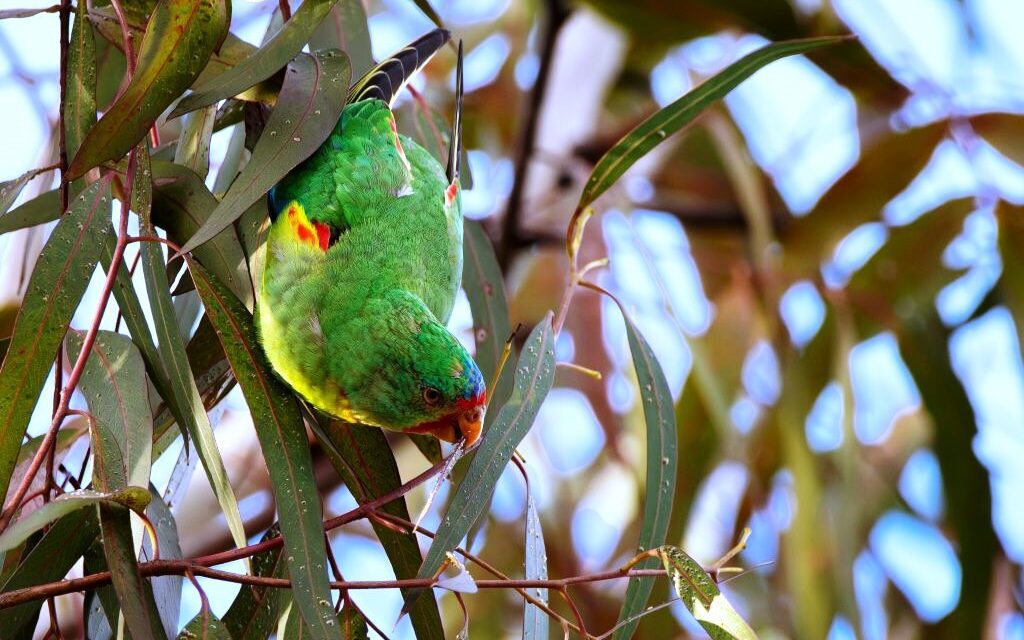When we think of a species so imperilled that they are predicted to go extinct within the next decade, animals that may come to mind include orangutans, gorillas, maybe rhinos – all of which are far away from us here in Hepburn Shire.
But just last month we had a whole flock of a critically endangered species in Clunes – Swift Parrots, or swifties” as they affectionately known! These attractive parrots are bright green with a long rusty red tail and a red face, and sadly their numbers may be as low as 500 birds in the whole world!
Members of BirdLife Ballarat and some locals from Daylesford and Glenlyon visited a private bush block near Dunach Nature Conservation Reserve and saw approximately 20 swifties – an amazing number of birds for such a rare species. The parrots were feasting on pollen and nectar as the Yellow Gums are in flower in the dry forests of Clunes.
Swift Parrots are one of only three migratory parrot species in the world. They breed in Tasmania in the summer months and then they cross the Bass Strait in the winter months to roam across eastern Australia’s box-ironbark country and woodlands looking for winter flowering eucalypts.
In Tasmania they rely on hollows for nesting and on good flowering seasons of Tasmanian Blue Gum. Ongoing commercial timber harvesting as well as predation on their nests by the introduced sugar glider are severely impacting these parrots.
Here on the mainland, swifties are threatened by the ongoing destruction of woodlands and dry forests. They are also at the mercy of our changing climate, such as the current harsh drought, as this impacts the flowering and nectar production of their favoured eucalypts.
When I visited Dunach Conservation Reserve on Monday I was hoping to see a Swift Parrot or two, and although the parrots had moved on I didn’t mind at all – it was so good to see a bushland alive with birdsong and blossom!
Here in Porcupine Ridge, I usually see about four or five species of honeyeaters – on that afternoon I saw eight! And in such great numbers too! The canopy of the trees was alive with movement and calling as the honeyeaters bustled about feeding. Little groups came down to the ground to bathe in the deep fresh puddles on the track and there were even a few honeyeaters feeding on the ground where sprays of blossom rested on the leaf litter.
The other nectarivores taking advantage of the flowers were of course other parrots. I saw a screeching flock of Musk Lorikeets, and a tiny Purple-crowned Lorikeet feeding high in the canopy in the afternoon sunshine.
If you have never explored Clunes bushland, now is a perfect time to go!
Information on Swift Parrots and their conservation can be found at BirdLife Australia https://birdlife.org.au/bird-profiles/swift-parrot/ and at the SWIFFT website https://www.swifft.net.au/cb_pages/sp_swift_parrot.php
Tanya Loos is a local naturalist, author and environmental consultant who loves to work in the environmental not-for-profit sector. She is the author of “Daylesford Nature Diary” available from her website or from Paradise Books in Vincent Street, Daylesford.
Have you got any nature questions for Tanya? Send them in!




